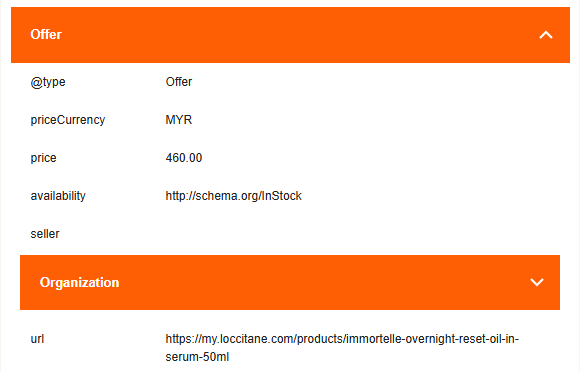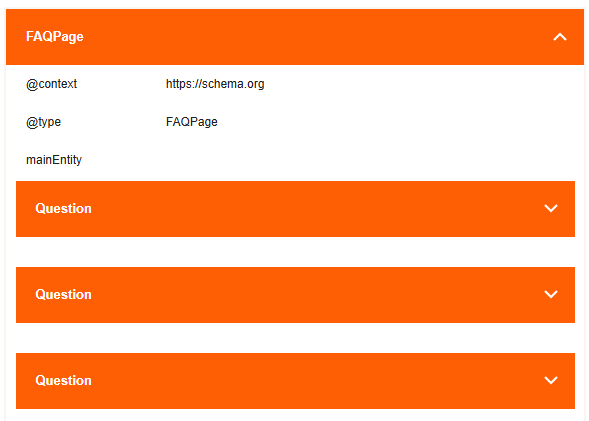In the dynamic landscape of Search Engine Optimization (SEO), mastering every available advantage is key to success. Among the most potent, yet frequently underutilized, strategies is Structured Data Markup. This isn’t merely a technical add-on; it’s a pivotal enhancement that can dramatically elevate your website’s visibility and user engagement within search engine results.
What is Structured Data Markup?
At its core, structured data is a standardized format designed to provide explicit, machine-readable clues about your webpage’s content to search engines like Google. While search engines employ sophisticated algorithms to understand web content, supplementing your pages with structured data enables them to interpret your information with greater precision and depth. For instance, on a recipe page, structured data can explicitly convey details such as specific ingredients, precise cooking times, and even calorie counts, allowing search engines to categorize and present this information accurately.
The Transformative Power of Rich Results
The most immediate and visually striking benefit of implementing structured data is the eligibility for rich results (also known as rich snippets) in Search Engine Results Pages (SERPs). These enhanced listings transcend the traditional blue link and descriptive text, offering visually engaging and highly informative additions that capture user attention:
- Star Ratings: Prominently display aggregated ratings for products, services, or reviews, instantly building trust.

- Images: Showcase compelling visuals for recipes, products, or articles, making your listing more appealing.
- Prices and Availability: For e-commerce sites, provide real-time pricing and stock information directly in the search results.

- Event Details: Clearly present dates, times, and locations for events, simplifying user discovery.
- FAQs: Allow frequently asked questions to expand directly within the search results, offering immediate answers.

- How-to Steps: Guide users through a process with numbered steps visible in the SERPs.
These rich results ensure your listing stands out in a crowded search landscape, significantly increasing the likelihood of user interaction. Industry examples, such as Rotten Tomatoes and The Food Network, have reported substantial increases in click-through rates and website visits post-structured data implementation, underscoring its tangible impact on user acquisition.
How Structured Data Elevates Your SEO Strategy
While structured data markup is technically not a direct ranking factor, its influence on your overall SEO performance is profound and multifaceted:
- Elevated Search Visibility: By qualifying your pages for rich results, structured data effectively expands your “real estate” in the SERPs. This greater prominence and visual appeal make your listing more noticeable and inviting to users.
- Optimized Click-Through Rate (CTR): Rich snippets offer users more comprehensive information at a glance, enabling them to quickly ascertain if your content directly addresses their query. This pre-qualification leads to higher-quality clicks and a reduced bounce rate.
- Deeper Search Engine Understanding: Structured data provides essential context and clarifies any ambiguities within your page’s content. This enhanced understanding allows search engines to build a more robust Knowledge Graph of entities and topics, establishing clearer connections between your website’s content and the broader web. This alignment with how AI algorithms categorize information is crucial for future search paradigms.
- Strategic Voice Search Optimization: As voice search continues its rapid ascent, structured data plays a critical role. It enables search engines to extract precise, concise answers directly from your content, making your information more readily discoverable and audible through voice queries.
- Improved Content Categorization: For complex websites with diverse content (e.g., news, reviews, products), structured data helps search engines accurately categorize each piece of content, ensuring it appears in the most relevant search contexts.
Exploring Key Types of Schema Markup
The comprehensive vocabulary for structured data is provided by Schema.org, an open-source, collaborative project that hosts an extensive library of schemas—currently numbering 797 types and 1,453 properties. While the list is vast, here are some of the most impactful and widely adopted schema types for SEO:
| Schema Type | Description/Purpose | Enhanced Search Result Example |
| Article Schema | Optimizes news articles, blog posts, and general editorial content for rich results and inclusion in Google News. | A prominent news article listing with a larger image, publication date, and author. |
| Product Schema | Essential for e-commerce, enabling the display of vital product details like price, availability, and customer reviews. | Product listing showing star ratings, price, “In Stock” status, and a direct link to purchase. |
| FAQPage Schema | Structures frequently asked questions (FAQs) and their answers, allowing them to appear as interactive rich snippets. | An expandable section directly below the search result with common questions and their answers. |
| Local Business Schema | Crucial for local SEO, providing comprehensive business details such as name, address, phone number, and opening hours. | A “Knowledge Panel” in the SERP sidebar with business hours, address, phone, map, and links for directions. |
| Event Schema | Highlights essential event details including dates, times, locations, and ticket information. | An event listing displaying the event name, date, time, location, and sometimes ticket availability or a link to buy tickets. |
| Review Schema | Enables the display of star ratings and snippets of user reviews for products, services, or organizations. | Search result showing prominent gold star ratings (e.g., “4.5 out of 5 stars”) directly under the title. |
| HowTo Schema | Structures step-by-step guides and instructions, making them eligible for visually distinct rich results. | A numbered list of steps appearing directly in the search result, guiding users through a process (e.g., “How to change a tire”). |
| Recipe Schema | Enriches recipe pages with critical information such as cooking times, specific ingredients, nutritional facts, and ratings. | A recipe card with an image, cooking time, calorie count, and star ratings, allowing filtering by specific criteria. |
| VideoObject Schema | Optimizes embedded or hosted videos for Google Video Search and increases their chances of appearing in featured snippets. | A video thumbnail in the search results with duration, upload date, and a brief description, often appearing in video carousels. |
| Organization Schema | Provides essential institutional details for businesses and organizations, including official name, logo, and contact info. | A “Knowledge Panel” for a brand or company, displaying its logo, official website, social profiles, and brief company information. |
Understanding Structured Data Formats: Technical Implementation
Google officially supports three primary formats for embedding structured data into your web pages:
- JSON-LD (JavaScript Object Notation for Linked Data): This is Google’s strongly recommended format due to its superior ease of implementation and maintenance. JSON-LD is injected as a JavaScript object directly into the <head> or <body> section of your HTML, completely separate from the visible content. Its graph-based structure allows for flexible connections between different schema types using @id attributes, making complex interrelationships straightforward to define. This separation from HTML content often simplifies development and debugging.
<script type="application/ld+json">
{
"@context": "https://schema.org",
"@type": "Recipe",
"name": "Delicious Chocolate Chip Cookies",
"image": "https://example.com/cookies.jpg",
"description": "A classic recipe for soft and chewy chocolate chip cookies.",
"prepTime": "PT20M",
"cookTime": "PT15M",
"recipeIngredient": [
"1 cup butter, softened",
"1 cup white sugar",
"1 cup packed brown sugar",
"2 large eggs",
"1 teaspoon vanilla extract",
"3 cups all-purpose flour",
"1 teaspoon baking soda",
"½ teaspoon salt",
"2 cups semisweet chocolate chips"
],
"recipeInstructions": [
"Preheat oven to 375 degrees F (190 degrees C).",
"Cream together the butter, white sugar, and brown sugar until smooth.",
"Beat in the eggs one at a time, then stir in the vanilla.",
"Combine flour, baking soda, and salt; gradually add to the wet ingredients.",
"Stir in the chocolate chips.",
"Drop by rounded spoonfuls onto ungreased baking sheets.",
"Bake for 10 to 12 minutes in the preheated oven, or until edges are nicely browned."
]
}
</script>- Microdata: This format involves embedding attributes directly within existing HTML tags to describe content. While still supported by Google, Microdata can often lead to a more cluttered HTML structure and is generally less flexible for complex data relationships compared to JSON-LD. It works by adding itemscope, itemtype, and itemprop attributes to your HTML.
<div itemscope itemtype="https://schema.org/Product">
<h1 itemprop="name">Advanced Widget Pro</h1>
<img itemprop="image" src="widget-pro.jpg" alt="Advanced Widget Pro">
<div itemprop="aggregateRating" itemscope itemtype="https://schema.org/AggregateRating">
Rated <span itemprop="ratingValue">4.5</span>/5 based on <span itemprop="reviewCount">250</span> reviews.
</div>
<div itemprop="offers" itemscope itemtype="https://schema.org/Offer">
Price: $<span itemprop="price">99.99</span>
<link itemprop="availability" href="https://schema.org/InStock">In Stock
</div>
</div>- RDFa (Resource Description Framework in Attributes): Similar in principle to Microdata, RDFa also uses HTML attributes to embed semantic information, but it is based on the broader RDF standard. While powerful, it is generally less common for mainstream SEO applications compared to JSON-LD.
It’s also worth noting that in certain advanced scenarios, it’s possible to combine JSON-LD and Microdata by linking them through @id attributes in JSON-LD and itemid attributes in Microdata, which can sometimes help reduce overall HTML size.
Essential Implementation and Validation Practices
To ensure your structured data is correctly implemented, free of errors, and eligible for those highly desirable rich results, Google provides indispensable tools and best practices:
- Adherence to Guidelines: Always follow Google’s general structured data guidelines as well as the specific guidelines for each data type you implement. Deviations can prevent your data from being used.
- The Rich Results Test: This crucial tool allows you to input a URL or code snippet and instantly see if your structured data is valid and what rich results it’s eligible for. Use it during development and deployment to catch errors early.
- Rich Result Status Reports in Google Search Console: Once deployed, these reports within Search Console provide a comprehensive overview of your site’s structured data. They identify errors, warnings, and valid items, allowing you to monitor performance and health at scale.
- Regular Monitoring: Structured data is not a “set it and forget it” task. Regularly check your Search Console reports for any new errors, especially after website updates or changes.
- Content Match: Ensure your structured data accurately reflects the visible content on your page. Misleading structured data can lead to manual penalties.
- Uniqueness: If you have multiple items of the same type on a page (e.g., several recipes), each should ideally have its own structured data block.
Structured data markup is unequivocally a fundamental and increasingly vital component of a robust modern SEO strategy. Its purpose is not to manipulate search engine rankings, but rather to empower search engines with a deeper, more accurate understanding of your content. By embracing structured data, you unlock the potential for significantly enhanced search visibility, improved user engagement through compelling rich results, and ultimately, greater success in the ever-competitive digital landscape. Invest in structured data, and watch your search performance flourish.
Curious About SEO? Contact Us Now for a Free Website Audit!



